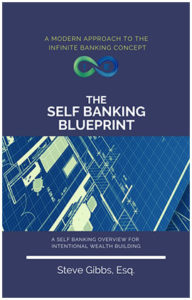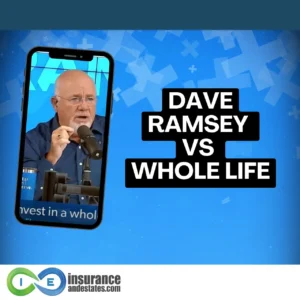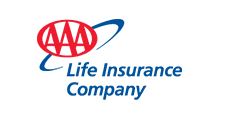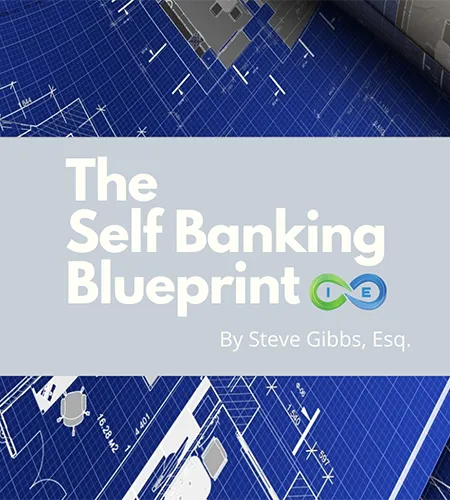Table of Contents:
- Introduction
- Key Differences Between Insurance Types
- Comparison Table
- Does IUL Fit in Your Portfolio?
- Life Insurance Decision Making Checklist
- Frequently Asked Questions
- Conclusion
Introduction: Understanding Indexed Universal Life Insurance
Key Benefit: Indexed universal life (IUL) insurance offers both death benefit protection and tax-deferred cash value growth potential linked to market index performance.
Indexed universal life (IUL) insurance could play a pivotal role in your comprehensive financial strategy – addressing both current protection needs and future financial goals. Unlike basic insurance policies, IUL offers permanent life insurance protection along with a cash value component that grows on a tax-deferred basis, potentially providing supplemental retirement income when you need it most.
The unique advantage of IUL lies in how its cash value grows – typically based on the performance of one or more market indexes like the S&P 500, while providing downside protection against market losses. This combination of growth potential and protection makes IUL worth considering for those seeking both insurance coverage and tax-advantaged wealth accumulation.
However, before committing to an IUL policy, it’s essential to understand how it compares to other types of life insurance. Each insurance type has distinct features that may align better with different financial objectives.
The Key Differences Between Insurance Types
Not all life insurance policies are created equal. Different types of coverage are designed to meet various objectives. Understanding these differences is crucial for making an informed decision about which policy best aligns with your financial goals.
IUL vs. Term Insurance
Primary Difference: Term offers temporary, affordable coverage with no cash value, while IUL provides permanent protection with cash value growth potential.
Term life is considered the most basic form of life insurance coverage. It offers death benefit protection only, without any type of cash value or investment component. Because of its “plain vanilla” structure, the premiums for term life are typically lower than for permanent coverage with a comparable death benefit amount.
As its name suggests, term insurance only remains in force for a set period, such as 5, 10, or 20 years. Once this time elapses, it may be possible to renew the policy. However, due to the insured’s increased age (and potential health issues), the new premium cost can be substantially higher—if the insured even qualifies at all.
Term insurance is often used for “temporary” needs, such as:
- College funding for children or grandchildren
- Covering the remaining balance of a home mortgage
- Income replacement during working years
- Business continuation plans
However, if you’re seeking longer-term protection combined with a way to enhance your retirement savings, IUL may be the better option to consider.
IUL vs. Whole Life Insurance
Primary Difference: Whole life offers guaranteed cash value growth with fixed premiums, while IUL provides potentially higher returns linked to market indexes with premium flexibility.
Whole life is a form of permanent life insurance that offers lifelong protection combined with a cash value component. Premiums paid into the policy fund both the death benefit and contribute to cash value growth.
The interest rate applied to a whole life policy’s cash value is typically guaranteed, determined by the insurer based on their long-term investment strategy and market conditions. This rate is usually comparable to returns from bonds or fixed income securities. Some whole life policies also earn dividends (though not guaranteed), which can further enhance cash value growth.
Like IUL, funds inside the cash value component grow tax-deferred, meaning no tax is due on gains unless or until withdrawn. This tax-deferred growth provides an additional “boost” to accumulation compared to fully taxable accounts.
Cash value in a whole life policy can usually be accessed via withdrawals or policy loans. Withdrawn gains are taxable, and early withdrawals may incur surrender charges. Policy loans can be accessed tax-free, and while interest is charged on these loans, repayment is optional. Any unpaid loan balance at the time of the insured’s death is deducted from the death benefit.
While whole life insurance offers strong guarantees and principal protection, it may not be the optimal choice if you’re looking for potentially higher growth within the cash value component.
See our comprehensive IUL vs Whole Life article for more.
IUL vs. Traditional Universal Life
Primary Difference: Traditional UL typically credits interest at rates set by the insurance company, while IUL’s returns are linked to market index performance with downside protection.
Universal life (UL) is another form of permanent life insurance that’s often described as similar to term life but with an added cash value component. In traditional UL, a portion of the premium covers the cost of the death benefit, while another portion goes into a cash account that earns interest. Similar to other permanent policies, these funds accumulate on a tax-deferred basis.
With traditional universal life insurance, you typically have the flexibility to adjust—within certain limits—the death benefit amount, as well as the timing and amount of premium payments.
For instance, if you choose to pay a lower premium at a certain time, the cash value won’t build as quickly, but the guaranteed death benefit will remain intact. Additionally, UL policyholders have more flexibility to allocate premium dollars between the death benefit and cash value components.
While traditional UL offers flexibility and potentially higher returns than whole life, indexed universal life insurance typically provides greater growth potential by linking returns to market index performance, all while maintaining downside protection.
IUL vs. Variable Universal Life Insurance
Primary Difference: VUL allows direct investment in market subaccounts with unlimited upside and downside risk, while IUL offers index-linked returns with downside protection.
Variable universal life (VUL) insurance combines death benefit protection with a cash component that grows tax-deferred. Like UL and IUL, variable universal life allows premium flexibility—provided that payments cover policy costs including the death benefit and investment management fees.
The funds in a VUL policy’s cash value can be invested in the insurance company’s “subaccounts,” which may include stocks, bonds, or index funds that offer growth potential based on market performance. This direct market exposure provides the highest growth potential among permanent life insurance options.
However, while VUL offers significant growth potential, it also carries the risk of loss if underlying investments perform poorly. If cash value drops too low, you may need to pay additional premiums to keep the policy in force.
Considering these factors, indexed universal life insurance may be better for long-term wealth building for many individuals, as it provides more growth potential than whole or traditional universal life insurance, while eliminating the market downside risk present in VUL policies.
Indexed Universal Life Comparison vs. Other Life Insurance Types
| Feature | Whole Life | Traditional Universal Life | Variable Universal Life | Indexed Universal Life |
|---|---|---|---|---|
| Premiums | Fixed | Flexible | Flexible | Flexible |
| Death Benefit | Typically fixed/set for life (as long as premiums are paid) | Can choose level or increasing death benefit option; may fluctuate based on premium payment | Can choose level or increasing death benefit option; may fluctuate based on premium payment | Can choose level or increasing death benefit option; may fluctuate based on premium payment |
| Cash Value Growth | Interest rate set by the insurance company | Guaranteed interest rate plus declared rate that can fluctuate based on economic factors | Funds placed in insurer’s subaccount(s); unlimited growth potential, but also the possibility of loss | Based on the performance of one or more underlying indexes; also includes a fixed rate option |
| Market Risk | Low – Guaranteed minimum returns | Low to Moderate – Minimum guaranteed rate | High – Direct market exposure with potential for loss | Moderate – Market-linked returns with downside protection |
| Growth Potential | Moderate | Moderate | High | Moderate to High |
| Best For | Conservative investors seeking guarantees | Those seeking premium flexibility with moderate guarantees | Aggressive investors comfortable with market risk | Those seeking growth potential with downside protection |
Does Indexed Universal Life Insurance Fit in Your Portfolio?
Important Consideration: While IUL offers multiple benefits, these policies are not suitable for everyone’s financial situation or goals.
Although IUL offers numerous advantages including potential for higher returns than traditional permanent insurance and protection against market losses, these policies are not universally appropriate. Before making a long-term commitment to indexed universal life—or any type of life insurance policy—it’s essential to evaluate how it would integrate with your overall financial strategy.
IUL policies may be particularly suitable for individuals who:
- Need permanent life insurance protection
- Want cash value growth potential higher than traditional permanent policies
- Seek protection against market downturns
- Desire premium payment flexibility
- Want to supplement retirement income through tax-advantaged means
- Have maxed out traditional retirement accounts like 401(k)s and IRAs
However, IUL may not be the best choice for those who:
- Only need temporary life insurance coverage
- Seek the lowest-cost insurance solution
- Prefer absolute guarantees over growth potential
- Want direct market participation with unlimited upside potential
- Have not yet maximized contributions to tax-advantaged retirement accounts
The decision-making checklist below can help you determine whether IUL or another type of life insurance would better serve your specific needs and objectives.
Life Insurance Decision Making Checklist
| Consideration | Your Assessment |
|---|---|
| Do you need life insurance? Assess whether your loved ones or other survivors (such as business partners) require coverage. |
|
| What type of life insurance is best for you? Compare term life, whole life, universal life, variable universal life, and indexed universal life insurance to determine which best fits your objectives. |
|
| How much coverage do you need? Calculate the amount necessary for replacing income, paying off debts, and handling final expenses. |
|
| How long do you need the coverage? Determine whether you need temporary coverage (term life) or lifelong protection (whole or universal life insurance). |
|
| What is your budget for premiums? Ensure the policy fits within your budget and won’t cause financial strain. |
|
| What policy features are important to you? Consider policy flexibility, how cash value growth is credited, and what additional riders are available. |
|
| Are there any limitations or exclusions? Understand what a policy may not cover to avoid surprises in the future. |
|
| How financially stable is the offering insurance company? Research the insurer’s financial strength and stability, as well as its claims-paying reputation. |
|
| How does the policy fit with your overall financial or estate plan? Consider how a particular policy complements other investments and insurance you have. |
Conclusion: Making the Right Life Insurance Choice
Understanding the distinct features, advantages, and potential drawbacks of different life insurance types is essential for making an informed decision. Each policy type serves different needs and financial objectives:
- Term life provides affordable, temporary protection
- Whole life offers guaranteed growth with fixed premiums
- Traditional universal life provides flexibility with moderate growth
- Variable universal life offers high growth potential with market risk
- Indexed universal life balances growth potential with downside protection
Indexed universal life insurance can be an excellent option for those seeking permanent coverage with greater growth potential than traditional permanent policies while maintaining protection against market downturns. However, the right choice depends entirely on your individual circumstances, financial goals, and risk tolerance.
Knowing how different coverage options work can help you choose a life insurance policy that aligns with your financial objectives and provides the protection your loved ones need. To learn more about how IUL could provide you and your loved ones with a financial safety net—both now and in the future—contact the specialists at Insurance and Estates today by calling (877) 787-7558.
Find the Right Life Insurance Policy for Your Needs
Unsure which life insurance type—IUL, whole life, or another option—best fits your financial goals? Get a personalized analysis from our independent advisory team at Insurance and Estates to make an informed decision.
- ✓ Receive a detailed comparison of IUL, whole life, and other policies tailored to your situation
- ✓ Evaluate growth potential, risks, and flexibility for each insurance type
- ✓ Explore tax advantages and retirement income strategies
- ✓ Get expert guidance on choosing the best policy for your long-term goals
Schedule your complimentary 30-minute life insurance consultation today and take the first step toward the right coverage.
No obligation. No sales pressure. Just expert advice to help you select the best life insurance policy for your financial future.
References
- Investopedia. “Indexed Universal Life Insurance (IUL).” https://www.investopedia.com/articles/insurance/09/indexed-universal-life-insurance.asp
- Western & Southern Financial Group. “IUL vs. Whole Life Insurance.” https://www.westernsouthern.com/life-insurance/iul-vs-whole-life
- Mutual of Omaha. “Whole Life Insurance and Indexed Universal Life Insurance: Comparing the Features.” https://www.mutualofomaha.com/advice/life-insurance/types-of-life-insurance/whole-life-insurance-and-indexed-universal-life-insurance-comparing-the-features
Frequently Asked Questions About IUL vs. Other Life Insurance Types
What is the main difference between IUL and whole life insurance?
The primary difference is in how the cash value grows. Whole life insurance offers guaranteed cash value growth with fixed interest rates set by the insurance company, while IUL provides potentially higher returns linked to market index performance (such as the S&P 500) with downside protection. Additionally, whole life has fixed premiums, whereas IUL offers premium payment flexibility.
How does the cash value grow in an IUL policy compared to other life insurance types?
In an IUL policy, cash value growth is tied to the performance of stock market indexes (like the S&P 500) with caps on maximum returns but also floors that protect against losses. In contrast, whole life offers lower but guaranteed growth rates, traditional universal life provides interest rates set by the insurer, and variable universal life allows direct investment in market subaccounts with unlimited upside potential but also risk of loss.
What are the risks associated with IUL policies?
The primary risks of IUL policies include: cap rates limiting your potential returns; complexity in understanding how index crediting works; higher fees compared to term insurance; the possibility of reduced death benefits or increased premiums if market performance is consistently poor; and surrender charges if you cancel the policy in the early years. Additionally, illustrated returns may not materialize, potentially affecting the policy’s long-term performance.
Is IUL a good investment compared to other life insurance types?
IUL shouldn’t be viewed primarily as an investment but rather as life insurance with investment-like features. It offers a unique combination of death benefit protection, tax-advantaged cash value growth, and downside protection that may complement other investments in your portfolio. However, for pure investment purposes, dedicated investment vehicles typically offer better returns without the insurance costs. IUL works best for those who need permanent life insurance and want cash value growth potential with market protection.
How do policy loans and withdrawals work in IUL versus whole life?
Both IUL and whole life allow access to cash value through policy loans and withdrawals. In both policy types, loans are generally tax-free (but not withdrawal of gains), and unpaid loans reduce the death benefit. The main difference is that whole life policies typically have fixed loan interest rates, while IUL policies may offer variable loan rates or different loan options like “wash loans” that can reduce or offset the net cost of borrowing.
Can I lose money in an IUL policy?
The cash value in an IUL policy is protected from market losses through a minimum guaranteed floor rate (typically 0-1%). However, you can still lose money in an IUL policy through various costs including premium loads, administrative fees, cost of insurance charges, and surrender charges if you terminate the policy early. Additionally, if premiums are insufficient to cover policy costs in the long term, the policy could lapse, resulting in loss of coverage and potential tax consequences.
Are IUL premiums flexible compared to whole life or term?
Yes, IUL premiums are flexible, which is a key advantage over whole life insurance (which has fixed premiums). With an IUL policy, you can adjust your premium payments within certain limits, paying more when your finances allow and less during tighter times, as long as there’s sufficient cash value to cover policy costs. In contrast, term insurance has fixed premium schedules, and whole life requires consistent premium payments to maintain the policy.
Who should consider IUL over other life insurance types?
IUL may be most suitable for individuals who: need permanent life insurance protection; desire premium payment flexibility; want cash value growth potential higher than traditional permanent insurance; seek protection from market losses while still participating in market gains; wish to supplement retirement income through tax-advantaged means; and have maxed out other tax-advantaged retirement accounts. It’s particularly appealing to those who want permanent coverage but find whole life premiums too high or inflexible.
How does IUL perform in a down market compared to VUL or whole life?
In a down market, IUL policies generally outperform Variable Universal Life (VUL) policies because IUL protects against market losses with a minimum floor rate (typically 0-1%). This means that even if the market index declines, your cash value won’t lose money due to market performance (though policy fees still apply). Whole life maintains steady guaranteed growth regardless of market conditions, so it may appear to perform better than IUL during prolonged market downturns but will likely underperform IUL during market recoveries and bull markets.
What are the tax advantages of IUL compared to other policies?
IUL offers several tax advantages similar to other permanent life insurance: tax-deferred cash value growth; tax-free death benefits to beneficiaries; tax-free policy loans; and the potential for tax-free retirement income through a combination of withdrawals up to your cost basis and policy loans. These advantages are generally shared with whole life and other universal life policies, though IUL may offer greater accumulation potential than whole life due to its index-linked growth potential.





